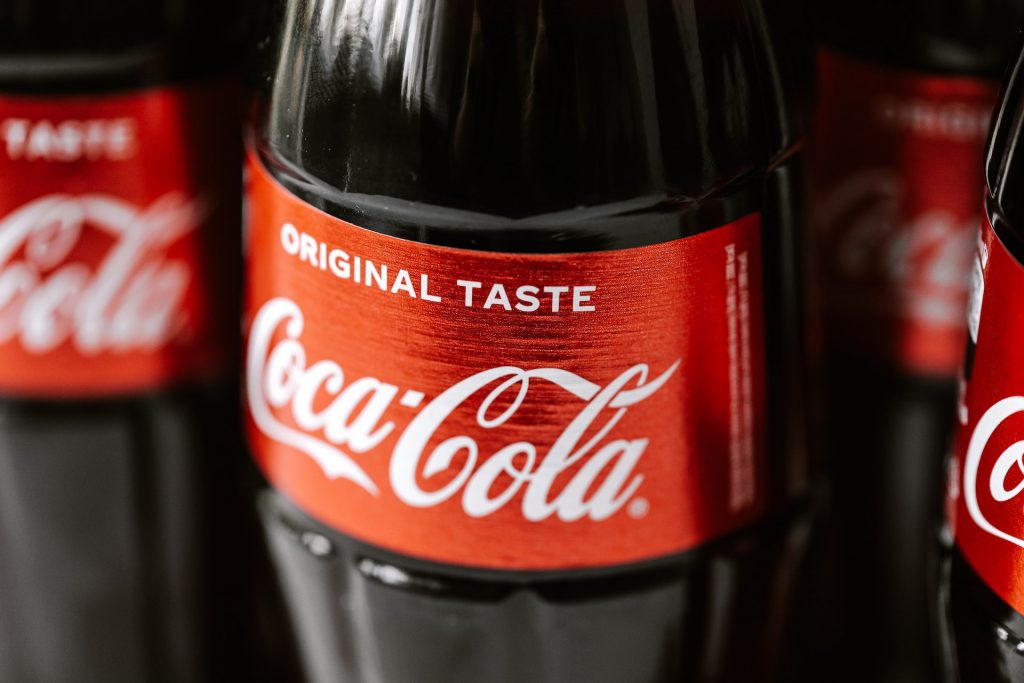Decoding Consumer Behavior: A Marketer’s Guide

In the vast marketing landscape, understanding what drives consumer choices and behaviors remains a puzzle marketers aspire to solve. It’s a puzzle with no fixed edges, for consumer behavior is as dynamic as the ever-changing tides of human thought and emotion.
Yet, in this enigmatic dance between buyers and sellers, there are patterns, principles, and psychological undercurrents that, when grasped, can provide marketers with a profound advantage.
In this guide, we embark on a journey to decode the complex web of consumer behavior, shedding light on the psychology behind their decisions, the multitude of factors that influence their purchasing behavior, the undeniable role of emotions in marketing, and the practical applications of psychology in crafting successful marketing campaigns. Let’s get started.
The Intricate Psychology of Consumer Decision-Making
The human mind is a labyrinth of desires, fears, and aspirations, and understanding why people make their choices is a challenge that has intrigued marketers for generations. At the core of consumer behavior lies the intricate psychology of decision-making.
Here, the journey begins with recognizing that consumers are not solely rational beings exclusively driven by logic and utility. Instead, they are emotional creatures whose decisions are often guided by feelings, perceptions, and subconscious influences.
Consider, for instance, the impulse buy. It’s that irresistible urge to purchase something unplanned, often driven by a fleeting emotion—a desire for indulgence or the need to reward oneself.

In a study by Antonio Damasio, a renowned neuroscientist, he discovered that people with damage to the emotional center of their brains were impaired in their decision-making abilities, even when their cognitive functions remained intact.
This underscores the profound influence of emotions in shaping our choices.
Factors That Weave the Fabric of Purchasing Behavior
Consumer behavior doesn’t occur in a vacuum. It’s influenced by many factors that intertwine to shape the final decision. These factors are as diverse as the people they influence but can broadly be categorized into internal and external influences.
Internal Influences are those factors that originate within the individual consumer. These include personal values, beliefs, attitudes, and lifestyle choices.
For instance, a person’s commitment to sustainability might drive them to prefer eco-friendly products. At the same time, someone with a minimalist lifestyle might seek simplicity in their purchases.
External Influences, conversely, are factors that arise from the consumer’s environment. These encompass cultural, social, and economic influences.
Culture, for instance, plays a significant role in shaping consumer preferences. A luxury product in one culture might be a household staple in another.
The Symphony of Emotions in Marketing
Emotions are the heartbeats of marketing. They’re the silent persuaders shaping consumers’ perceptions of brands, products, and services. Think about the last memorable advertisement you encountered.
Chances are, it stirred emotions within you, whether joy, nostalgia, empathy, or even a touch of humor. Emotions can create lasting impressions, build brand loyalty, and drive purchase decisions.
Consider the iconic Coca-Cola holiday campaigns. They evoke warmth, togetherness, and joy, associating these emotions with the brand.

As a result, when consumers experience those emotions, they are more likely to choose Coca-Cola, even if it’s just for a moment of connection during the holiday season.
Moreover, studies in neuromarketing have shown that emotions significantly impact brand recall and decision-making. When consumers have an emotional connection to a brand, they’re not just customers but brand advocates.
Applying Psychology in Crafting Marketing Campaigns
Understanding consumer psychology is not merely an academic pursuit; it’s a practical tool in a marketer’s arsenal. Applying psychological principles in marketing campaigns can yield remarkable results. Here are a few ways to put psychology to work:
1. Storytelling: Crafting Emotional Narratives
Compelling storytelling in marketing goes beyond just relaying facts; it’s about creating an emotional connection between the brand and the audience. Stories can captivate, resonate, and leave a lasting impact when done right. Here’s how:
- Identify Your Brand’s Narrative: Start by identifying the core narrative of your brand. What values, emotions, or experiences does your brand represent? Is it about innovation, nostalgia, or empowerment?
- Relatable Characters: Introduce relatable characters or situations in your marketing content. These characters should embody the values or emotions your brand wants to convey. For example, if your brand stands for adventure, tell the story of an individual’s transformative journey.
- Conflict and Resolution: A compelling story often includes a conflict or challenge that needs resolution. This engages the audience emotionally as they root for the resolution. It could be a customer overcoming a problem using your product or service.
- Consistency in Brand Voice: Ensure that the tone and voice of your storytelling align with your brand’s identity. Consistency builds trust and reinforces the emotional connection.
- Visual Storytelling: Complement your narratives with visual elements like videos, images, or animations. Visual storytelling enhances engagement and can convey emotions more effectively.
For example, consider Airbnb’s “Host Stories” campaign. They feature real-life stories of hosts and their unique experiences. Each story taps into different emotions – from warmth and connection to adventure and curiosity.
By showcasing these narratives, Airbnb creates an emotional connection with potential travelers, making them more likely to choose Airbnb for their next trip.
2. Social Proof: Harnessing the Power of the Crowd
Social proof is a psychological phenomenon where people tend to follow the actions of others, assuming that those actions are correct or advisable. In marketing, it’s a potent tool to influence consumer behavior. Here’s how to utilize it effectively:
- Reviews and Testimonials: Encourage satisfied customers to leave reviews and testimonials. Genuine feedback from real people builds trust and credibility. Share these on your website and marketing materials.
- User-Generated Content (UGC): Encourage your customers to create content related to your products or services, such as photos, videos, or reviews—Repost UGC on social media platforms to showcase authentic endorsements.
- Ratings and Awards: If your products or services have received accolades or awards, prominently display these on your website and marketing materials. Awards serve as external validations of quality.
- Influencer Partnerships: Collaborate with influencers who align with your brand. Their endorsement can carry significant weight in the eyes of their followers.
For instance, TripAdvisor effectively uses social proof by prominently displaying user reviews and ratings for hotels, restaurants, and attractions.
Travelers often rely on the experiences of others when making their travel decisions, making social proof a fundamental component of the platform’s success.
3. Scarcity and Urgency: The FOMO Factor
Creating a sense of scarcity or urgency taps into the Fear of Missing Out (FOMO), a strong emotional motivator. Consumers are more likely to take action when they believe they might miss out on something valuable. Here’s how to apply this principle:
- Limited-Time Offers: Promote limited-time discounts or special offers. Communicate when the offer expires to create urgency.
- Low-Stock Notifications: If a product is running low in stock, inform customers. This encourages quicker decision-making, as they want to take advantage of the opportunity to purchase.
- Exclusive Access: Offer exclusive access to a product, service, or content for a limited period. This makes customers feel privileged and motivates them to act promptly.
For example, Amazon’s “Prime Day” sale is a prime example of creating urgency and scarcity. It’s a 48-hour event with exclusive discounts and deals available only to Amazon Prime members.
The limited sale duration and the deals’ exclusivity drive a sense of urgency and FOMO, encouraging more people to sign up for Prime or make purchases during the event.
4. Anchoring: Framing the Choices
Anchoring is a cognitive bias where individuals rely heavily on the first piece of information encountered when making decisions. In marketing, this principle can be used to frame choices in a way that benefits your brand:
- Present High-Value Options First: Start with the highest-priced option when displaying product or service options. This sets a reference point for comparison and makes the subsequent, lower-priced options appear more attractive and affordable.
- Highlight the Value: Emphasize the unique value propositions of each option. Communicate how each choice benefits the customer.
- Bundle Offers: Bundle related products or services together and show the combined price alongside the individual prices. This creates a perception of value and encourages customers to opt for the bundle.
Consider how many software companies present their pricing plans. They often showcase the most comprehensive, high-priced plan first. This anchor makes the lower-tier plans appear more economical and enticing.
5. Reciprocity: Giving to Receive
Reciprocity is a fundamental social principle that suggests when someone does something for us, we feel obligated to reciprocate. In marketing, offering something valuable upfront can trigger this sense of reciprocity. Here’s how to apply it:
- Free Trials and Samples: Offer free product or service trials. Allow customers to experience its value before making a purchase.
- Valuable Content: Create and share valuable content such as eBooks, webinars, or guides. Provide this content for free in exchange for the customer’s contact information, allowing you to nurture the relationship.
- Exclusive Access: Grant exclusive access to your loyal customers to events, promotions, or content. This makes them feel valued and encourages continued engagement.
For instance, HubSpot offers a range of valuable marketing resources, including free marketing courses and templates. By providing these resources for free, they establish trust and reciprocity with their audience, often leading customers to consider their paid products and services.
By applying these psychological principles effectively in your marketing campaigns, you can create more engaging and persuasive content that resonates with your audience on a deeper level, ultimately driving consumer behavior in your desired direction.
CRM’s Role in Analyzing and Utilizing Consumer Data
The journey to decode consumer behavior doesn’t stop at understanding; it extends into the realm of application. This is where Customer Relationship Management (CRM) systems come into play.
CRM provides businesses with sophisticated tools designed to collect, analyze, and leverage consumer data.
- Data Collection: CRM systems compile data from various touchpoints—website visits, social media interactions, email responses, and more. This comprehensive data collection provides a holistic view of each customer’s behavior.
- Data Analysis: CRM’s analytics capabilities allow businesses to gain insights into consumer preferences, purchasing patterns, and engagement history. It can identify trends, segments, and potential opportunities.
- Personalization: Armed with consumer insights, businesses can personalize marketing messages and offers. CRM systems enable automated personalization, ensuring that each interaction resonates with individual preferences and behaviors.
- Targeted Marketing: With precise segmentation and targeting, CRM systems empower businesses to craft marketing campaigns that reach the right audience with the right message at the right time.
- Campaign Effectiveness: CRM tracks the performance of marketing campaigns, providing real-time data on what’s working and what isn’t. This allows for continuous optimization and improvement.
Understanding and decoding consumer behavior is a multifaceted journey that requires a blend of psychology, data analysis, and practical application. It’s a journey filled with nuances where emotions, influences, and choices converge.
Conclusion
With CRM systems, entrepreneurs gain a powerful ally in this quest. CRM’s ability to collect, analyze, and utilize consumer data enables a deeper understanding of consumer behavior.
It provides the means to craft tailored marketing strategies, enhancing campaign effectiveness and fostering enduring customer relationships. It’s a journey that transforms consumer behavior from an enigma into a strategic advantage. For marketers, it’s a journey worth embarking upon.
Learn more about decoding consumer behavior using data and tech. Talk to our experts. Book a FREE demo below.
Curious how digital ecosystems can help improve your business?
Check out how digital ecosystems can boost your company performance by getting started here.
Book a Demo